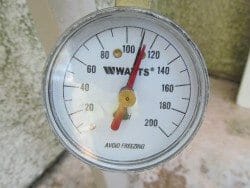Optimizing Well Performance: Key Insights on Proper Pressure Tank Sizing
Understanding the Importance of Proper Pressure Tank Sizing
When it comes to maintaining a well system, selecting the right pressure tank is crucial for efficiency and longevity of the system. A well-sized pressure tank not only helps in extending the motor life but also minimizes the risk of premature pump failure. This is achieved by reducing the frequency of the pump cycles, which in turn, lessens the wear and tear on the pump. Therefore, the general rule of thumb is: the larger the pressure tank, the longer the motor life. However, physical space and other constraints might not always allow for maximizing the tank size.
The Basics of Pressure Tank Sizing
To determine the appropriate size for a pressure tank, it’s essential to understand a few key aspects of your well system’s operation. The criteria include knowing the flow rate of the pump, the system’s cut-in and cut-out pressure, and the desired runtime or the time between pump cycles. Manufacturers typically recommend a minimum runtime of one minute for pumps smaller than 1 horsepower and at least two minutes for larger motors. This minimum runtime is critical to ensure that the pump does not start and stop too frequently, which can lead to overheating and damage.
Calculating Your Needs
One common misunderstanding about pressure tanks is equating the tank’s total volume with its usable water volume, or drawdown capacity. For instance, a 20-gallon tank does not hold 20 gallons of accessible water. It contains a bladder that expands and contracts, holding a certain amount of water based on the pressure settings. This actual volume of available water can be significantly less than the total volume of the tank. As an example, a 20-gallon tank might only provide about 4.5 to 6.5 gallons of usable water, depending on the system’s pressure settings.
Impact of Flow Rate and Pressure on Tank Size
The relationship between the flow rate, pressure, and tank size is pivotal. As the flow rate increases, the size of the pressure tank should proportionally increase to accommodate the higher volume of water passing through the system. A simple method to calculate the necessary drawdown capacity of a tank is by multiplying the flow rate by the target runtime. For instance, a system with a flow rate of up to 10 gallons per minute should have a tank with at least one gallon of drawdown capacity per gallon per minute of flow. This requirement scales up as the flow rates increase.
Understanding Pressure Settings and Their Effects
Pressure settings play a significant role in the functioning of pressure tanks. Common settings include 30/50, 40/60, and 50/70 psi, where the lower number indicates the pressure at which the pump will start, and the higher number indicates when it will stop. These settings impact the drawdown capacity because the pressure affects how much the bladder within the tank can expand. Higher pressures allow the bladder to stretch more, thereby altering the drawdown capacity. Adjusting these settings according to the specific needs of your well system can optimize performance and efficiency.
Choosing the Right Pressure Tank
The selection of a pressure tank should never be underestimated as it directly impacts the operational efficiency and lifespan of well systems. Using tools such as sizing charts can simplify this decision-making process. These charts help correlate the flow rate and pressure settings to the appropriate tank size, ensuring that the system operates within safe and efficient parameters. Always consider consulting with a specialist or referring to manufacturer guidelines when selecting a pressure tank to ensure compatibility and adequacy for your specific well system requirements.
Ultimately, the goal in choosing the right pressure tank is to enhance the functionality and durability of your well system. By understanding and implementing the correct specifications, homeowners and professionals alike can ensure optimal performance and prevent common issues associated with inadequate sizing. Remember, when in doubt, it’s advisable to reach out to professionals who can provide tailored advice based on the specific characteristics of your well system. Making informed decisions in this regard not only saves money in the long run but also ensures a steady and reliable water supply.




